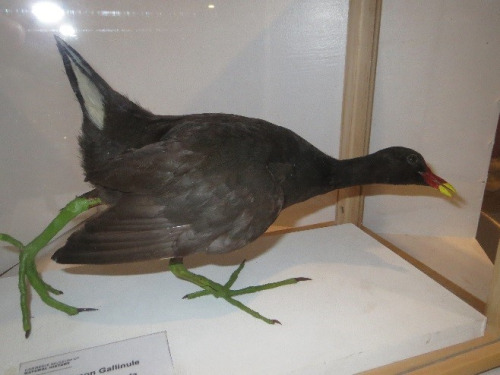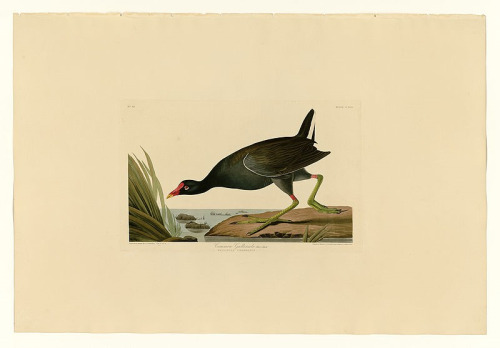
by Patrick McShea
Taxidermists working to position animal remains in life-like postures rely on photographs to supplement firsthand observations. In the case of the common gallinule pictured above, reference materials might well have included John James Audubon’s 1835 portrait of the chicken-sized marsh bird. There’s only so many ways for the species to be posed, of course, and current records for the 14-inch-long mount do not list the taxidermist who prepared it.
In the absence of certainty you may decide for yourself. The right-foot-leading taxidermy mount is available for close inspection in Discovery Basecamp, Carnegie Museum of Natural History’s new permanent gallery. Audubon’s left-foot-leading bird (image below), along with many of his other works, can be studied in great detail at a University of Pittsburgh digital library website featuring a complete set of images from the artist’s monumental work, The Birds of America.

Patrick McShea works in the Education and Visitor Experience department of Carnegie Museum of Natural History. Museum employees are encouraged to blog about their unique experiences and knowledge gained from working at the museum.
